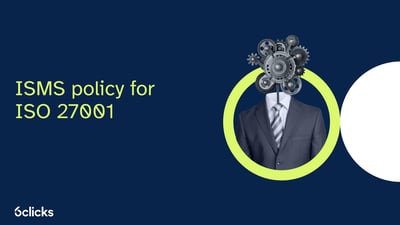What is ISO 31000?
ISO 31000 is a set of guidance developed by the International Organization for Standardization (ISO) that provides for the management of risk in projects. The guidelines are designed to help organizations identify and manage risks in a systematic and consistent way, in order to increase the chances of project success.
The standard is based on the principles of risk management outlined in ISO 31000, which is a general standard for risk management that provides guidance on how to identify, assess, and control risks. ISO 31000 builds on these principles and provides specific guidance on how to apply them to the management of risks in projects.
The standard outlines a risk management process that includes the following steps:
- Establishing the context for risk management: This involves identifying the stakeholders and the objectives of the project, as well as defining the scope and boundaries of the risk management process.
- Identifying risks: This involves identifying the potential risks that could impact the project, including both positive and negative risks.
- Assessing risks: This involves evaluating the likelihood and impact of identified risks, as well as considering the potential consequences of each risk.
- Managing risks: This involves developing and implementing strategies to address identified risks, including risk mitigation, risk transfer, and risk acceptance.
- Monitoring and reviewing risks: This involves regularly reviewing and updating the risk management plan, as well as monitoring the effectiveness of risk management activities.
- Communication and consultation: This task is designed to help understand the interests and concerns of stakeholders, to ensure that the risk management process is focusing on the right elements, and to provide an explanation for the rationale behind decisions and specific risk treatment options.
Overall, ISO 31000 is intended to help organizations effectively manage risks in order to increase the chances of project success and achieve their objectives.
Is ISO 31000 still relevant?
Yes, ISO 31000 is still relevant and widely used as a standard for risk management in projects. The principles and guidelines outlined in the standard are based on best practices and are applicable to a wide range of projects and organizations.
Effective risk management is an important part of project management, as it helps organizations identify and address potential risks that could impact the success of a project. By following the guidelines outlined in ISO 31000, organizations can develop and implement a systematic and consistent approach to risk management, which can help increase the chances of project success and achieve their objectives.
It's worth noting that ISO 31000 is just one of many standards and guidelines available for risk management in projects. Other relevant standards include the Project Management Institute's (PMI) Project Management Body of Knowledge (PMBOK) and the Risk Management Professional (PMI-RMP) certification. Organizations may choose to adopt one or more of these standards and guidelines, depending on their specific needs and goals.
How is ISO 31000 useful compared to other standards?
The ISO 31000 guidelines for risk management innovates in several areas compared to older standards on risk management.
- One key innovation is the definition of risk as the effect of uncertainty on the possibility of achieving an organization's objectives. This definition emphasizes the importance of defining objectives before attempting to control risks and highlights the role of uncertainty in risk management.
- Another innovation is the introduction of the concept of risk appetite or the level of risk that an organization is willing to take on in return for expected value.
- The standard also defines a risk management framework with specific procedures, roles, and responsibilities for managing risks, and it presents a management philosophy in which risk management is viewed as an integral part of strategic decision-making and the management of change.
What are the ISO 31000 principles?
The ISO 31000 standard for risk management includes the below principles that should be followed:
- Creates and protects value: Risk management should aim to create and protect value for the organization.
- Based on the best information: Risk management should be based on the best available information.
- Integral part of organizational processes: Risk management should be integrated into the organization's processes and activities.
- Tailored: Risk management should be tailored to the specific needs and goals of the organization.
- Part of decision-making: Risk management should be integrated into decision-making processes at all levels of the organization.
- Takes human and cultural factors into account: Risk management should consider the impact of human and cultural factors on risk.
- Explicitly addresses uncertainty: Risk management should explicitly address uncertainty and its impact on the organization.
- Transparent and inclusive: Risk management should be transparent and inclusive, involving all relevant stakeholders in the process.
- Systematic, structured, and timely: Risk management should be systematic, structured, and timely, following a defined process and timeline.
- Dynamic, iterative, and responsive to change: Risk management should be dynamic, iterative, and responsive to changes in the organization and its environment.
- Facilitates continual improvement: Risk management should facilitate continual improvement of the organization.
Final thoughts
By following a structured and effective methodology, organizations can ensure that they are meeting the minimum practices required for implementing ISO 31000. While there is no one-size-fits-all approach to implementing ISO 31000, some common steps can help organizations balance conflicting requirements and prepare for a successful certification audit.
At 6clicks, we make it easy for organizations to implement multiple standards for ISMS, track and monitor activities related to the implementation, and demonstrate compliance easily. To see how our AI engine Hailey and the powerful automation of our platform work to streamline Risk Management, take a demo of our platform and get started with 6clicks.
Written by Andrew Robinson
Andrew started his career in the startup world and went on to perform in cyber and information security advisory roles for the Australian Federal Government and several Victorian Government entities. Andrew has a Masters in Policing, Intelligence and Counter-Terrorism (PICT) specialising in Cyber Security and holds IRAP, ISO 27001 LA, CISSP, CISM and SCF certifications.










